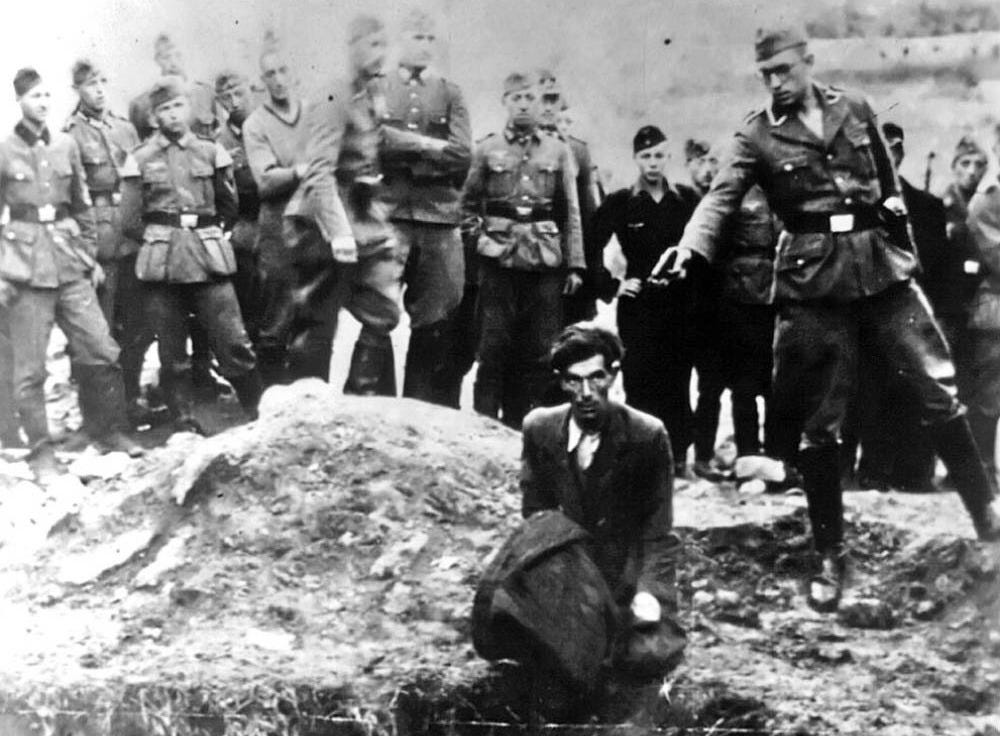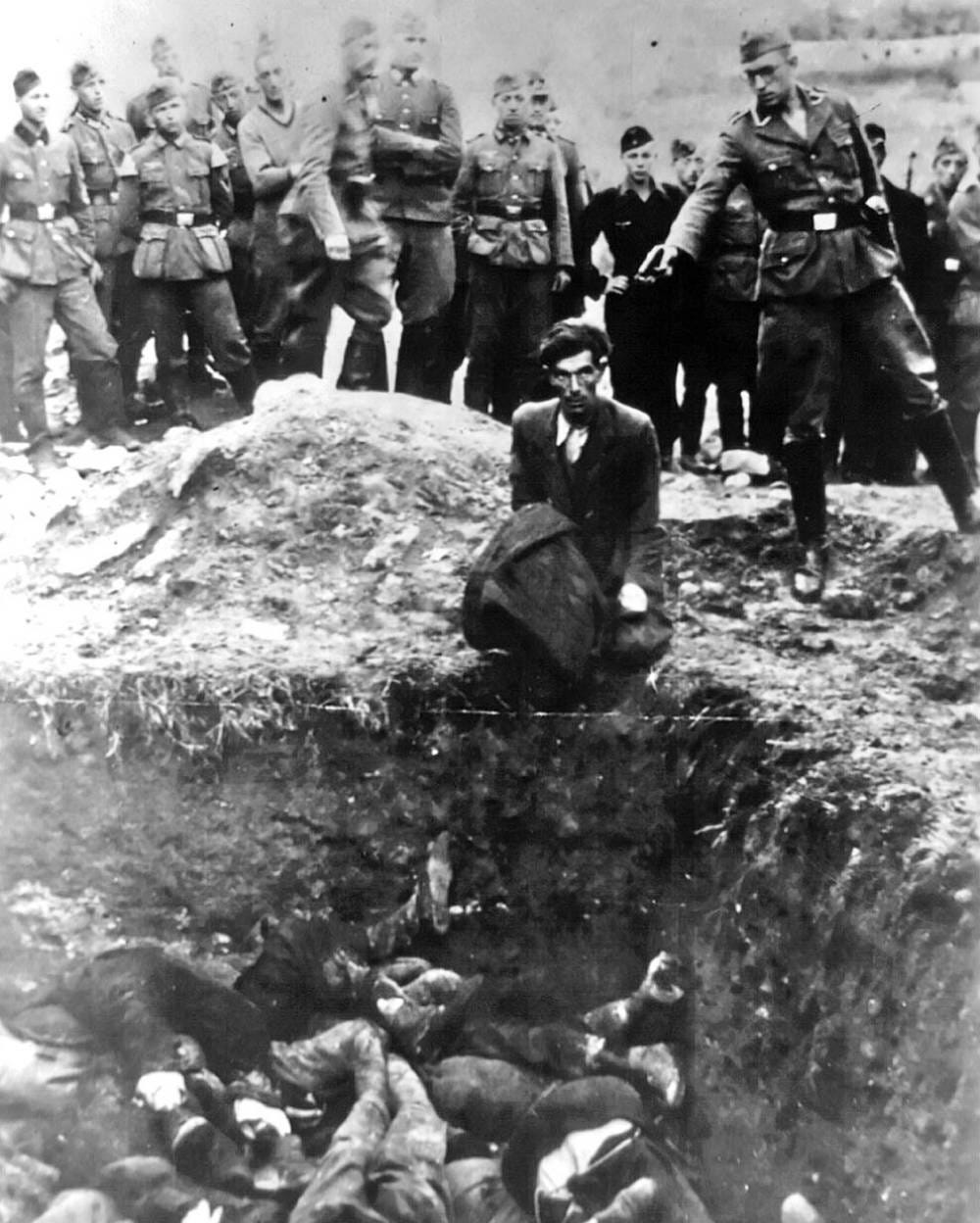The modern methods of scholarship that helped identify a Nazi killer
How AI, public scholarship and mass media can aid historians

It’s not often that articles of historical scholarship published in academic journals make it into the global news circuit. However, over the last couple of weeks, a piece published in the German Zeitschrift für Geschichtswissenschaft (Journal of Historical Studies) has not only made it into the German news but also into British, American, Canadian, and other international outlets.
The article, written by historian Jürgen Matthäus, concerns one of the most well-known photographs of the Holocaust. It shows a man kneeling at the edge of a mass grave filled with bodies. A member of a mobile death squad of the SS stands next to him, holding a pistol to his head, about to shoot him dead. In the background, a group of other uniformed men stand and watch.
The photograph, conventionally known as The Last Jew in Vinnitsa, has long been shrouded in uncertainty. Its caption places the event in Vinnytsia in western central Ukraine. However, Matthäus’s archival scrutiny strongly points to a mass execution on 28 July 1941 near Berdychiv, over 50 miles to the north.
The identities of those in the frame remain contested: the kneeling victim is anonymous, and for decades so was the gunman. The photographer is unknown, too, though military officers’ diaries, negatives tucked into Wehrmacht albums, and local unit records suggest the image was taken by a German soldier familiar with the execution scene. Until recently, the image’s power lay partly in its anonymity and the haunting questions it poses about documenting atrocity.
Matthäus’s latest findings made international news for two reasons. First, he thinks he has identified the gunman. Second, he got there using highly modern methods that included the use of AI, citizen research and mass media. The outcome, which goes a long way to revealing the details behind one of the most disturbing images of the Second World War, is as fascinating as the journey that led up to it.
Keep reading with a 7-day free trial
Subscribe to ZEITGEIST to keep reading this post and get 7 days of free access to the full post archives.


